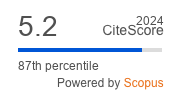The Invisible Architects of Public Engagement: Understanding the Different Types of Roles Played by Parliamentary Staff
| Views: | 2018 | | | Downloads: | 1639 |
Although public engagement has become a cornerstone of modern parliamentary functions, the role of parliamentary staff in shaping it remains largely neglected and understudied. Whilst the literature acknowledges that staff have been key in the development of public engagement in legislatures, we do not know in what ways. This oversight neglects a crucial aspect: the administration of parliament is not just a backdrop but the very foundation of a functioning parliament, being particularly noticeable and significant within the realm of public engagement, as a relatively recent activity for parliaments beyond their traditional functions of legislation, scrutiny and representation. This paper addresses this gap by uncovering the hidden contributions of parliamentary staff in the development of public engagement strategies. We adopt an interpretive qualitative research approach, drawing on 37 semi-structured elite interviews with officials and MPs of the Parliaments of Austria, Portugal, and the United Kingdom. Through thematic analysis, we develop a novel typology that identifies six roles staff play in parliamentary public engagement: Institutional Innovator, Knowledge Facilitator, Strategic Decision-Maker & Coordinator, Guarantor of Institutional Legitimacy, Operational Manager and Evaluator & Monitor. Crucially, we also explore the enabling and constraining factors — from political will and institutional structure to administrative resources — which shape how these roles are enacted. Our analysis shows the pivotal part these six roles play in navigating the complex interplay between the political and the non-political dimensions of a parliamentary setting, which have been crucial to push forward the agenda of public engagement within legislatures.
© Sofia Serra-Silva, Cristina Leston-Bandeira. This is an open access article distributed under the terms of the Creative Commons Attribution 4.0 license (http://creativecommons.org/licenses/by/4.0), which permits any use, distribution, and reproduction of the work without further permission provided the original author(s) and source are credited.


